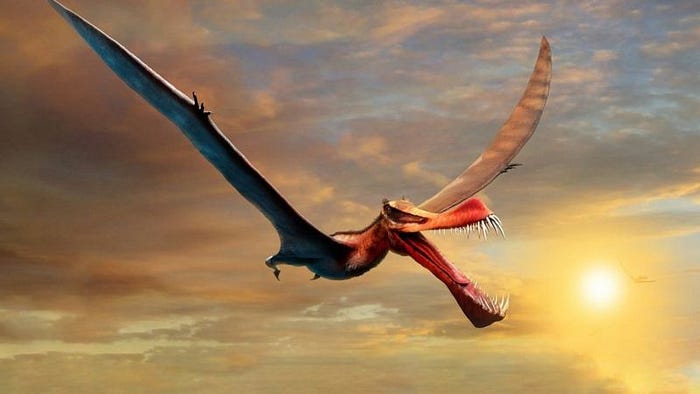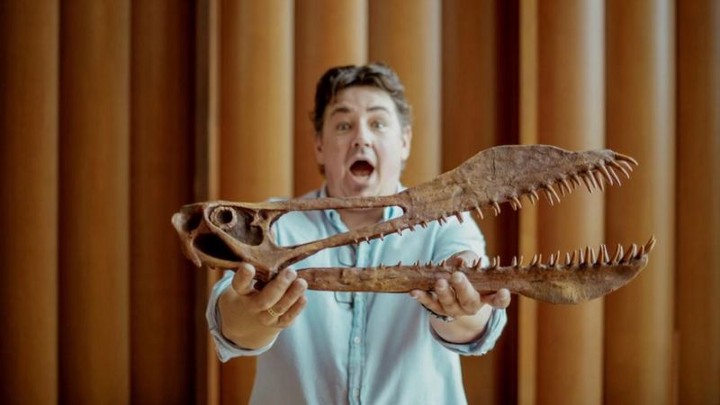 ragons are part of most fictitious adventure stories from the medieval era. These remarkable beasts seem like the ultimate predatory creature, yet their creation or appearance in fiction books is quite unknown. Some consider it a mythological beast that was created without the slightest knowledge of dinosaurs which have the closest resemblance to these fictitious beasts.
ragons are part of most fictitious adventure stories from the medieval era. These remarkable beasts seem like the ultimate predatory creature, yet their creation or appearance in fiction books is quite unknown. Some consider it a mythological beast that was created without the slightest knowledge of dinosaurs which have the closest resemblance to these fictitious beasts.
It turns out that these beasts from novels aren’t as far away from reality as we have thought.
The discovery of a new species
A team of paleontologists from the University of Queensland in Australia led by Tim Richards has discovered a quite well-preserved fossil of a new species of Pterosaur that had never been seen before. Pterosaur is classified as big-winged carnivorous reptiles from the prehistoric era that ruled on most of Earth’s continents about 200 million years ago.
This new species was named by the team Thapunngaka shawi and is considered to be the largest winged creature to have lived on this planet. From the scientific analysis of the reptile’s head, it was estimated that it had an average wingspan of 23 feet (7 meters) and about 40 razor-sharp teeth that were able to even penetrate the thick skin of most dinosaurs.
Based on the radiocarbon analysis the fossil seems to be 105 to 110 million years old. The fossil was found in June 2011 on Wanamara country, near Richmond in north-west Queensland, by a council worker who would search for fossils in his free time. Tim Richards mentioned that fossils of Pterosaurs are very hard to find as most of them would have ended up dead in water where predatory fish would consume its corpse.
Even this specific fossil had died and collapsed in the water. This is known by geologists who confirmed that two-thirds of the area that is today Queensland was covered by sea about 100 million years ago, therefore it is really surprising to see this specimen in such good condition. Another aspect that makes this particular species hard to find it’s its hollow bones which were less likely to fossilize. The hollow bones are specific to this species, making it lighter and able to reach higher speeds.
After 11 years of studying the fossil and comparing it to already existing species, Tim Richards was able to find some unique aspects which created this new species. Another aspect that makes it a very unique species is a crest in the lower jaw as well as the upper jaw, this presumably gave it better aerodynamics as well as more force when biting prey.
A real-life dragon?
Compared to other Pterosaurs, this species was a rarer sight in prehistoric times, but most creatures would fear its predatory ability. Just imagine seeing the shadow of such a large creature passing above you. Thapunngaka had rough scales that would protect her from other predators, similar to the armor-skin dragons have in novels. Even Tim Richards mentioned its close resemblance to what we define as a dragon:
“It’s the closest thing we have to a real-life dragon” (Quote by Tim Richards/University of Queensland)

It may not be able to spit flames, but this could be the closest creature to a dragon that our world has seen. It is very interesting how we slowly discover new prehistoric creatures which we closely defined in fictitious writings, at the end of the day a dragon is still a-flying reptile, just a lot bigger.
The study conducted by Tim Richards and his team shows potential for the existence of other Pterosaur species that could be much larger than Thapunngaka Shawi and maybe even a closer resemblance to dragons. Many paleontologists think that we only scratched the surface of fossil findings, there are a lot more waiting to be discovered and I agree with them.
Avid Writer with invaluable knowledge of Humanity!
Upcoming historian with over 30 million views online.
“You make your own life.”




